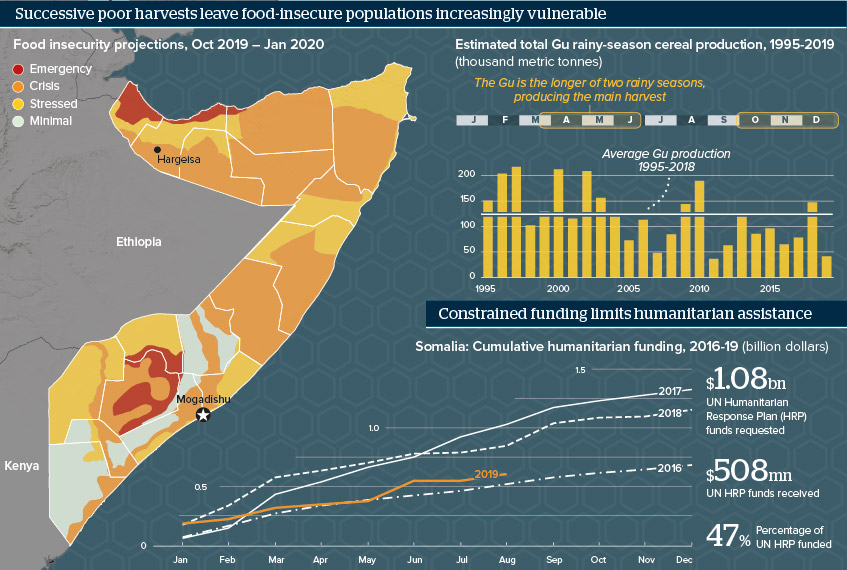Somalia may face chronic hunger issue
Recurrent droughts of increasing frequency and intensity threaten the lives and livelihoods of millions of people
Source: Food and Agriculture Organization (FAO); Famine Early Warning Systems Network (FEWSNET); UN Office for the Coordination of Humanitarian Affairs (OCHA)
Outlook
Aid agencies warned on September 2 that poor rains during the main ‘Gu’ rainy season have resulted in the worst cereal harvest since the 2011 famine, with production in some areas almost 70% below the long-term average. Some 6.3 million people -- over half the population -- could be food insecure over the coming months, with up to 2.1 million facing crisis or worse outcomes.
Humanitarian assistance is the only thing preventing worsening conditions, but aid agencies also warn of funding shortfalls, with only 47% of a requested 1.08 billion dollars received so far under the UN’s 2019 Humanitarian Response Plan.
Meanwhile, recurrent droughts over the past several years -- of apparently increasing frequency -- are stretching the sustainability of agricultural and pastoral livelihoods to breaking point.
Impacts
- Countries across the region may have to find ways to adapt to ever-more-frequent droughts as climate change bites.
- Facing insecurity, limited resources, weak institutions and poor infrastructure, Somalia has little capacity to bolster coping mechanisms.
- Dwindling food supplies and depleted livestock herds will drive recurrent food price shocks.
- As global humanitarian funding becomes increasingly constrained amid heightened needs, shortfalls in funding will persist.
